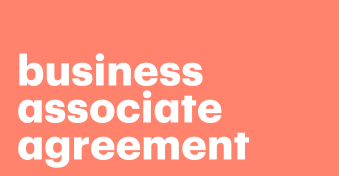When you’re running a business or large organization, there will often be times when you feel the need to safeguard your confidential information and intellectual property.
While standard contracts such as NDAs can be useful, they often aren’t watertight enough for many businesses.
That’s where a CIIA agreement comes in.
If you’re wondering what a CIIA agreement is, you wouldn’t be alone — many businesses are looking into CIIA agreements as they grow in popularity.
So, let’s learn everything you need to know about them.
Key takeaways
- CIIA agreements protect your company’s confidential information.
- They’re also a great way to ensure you maintain control over your intellectual property.
- CIIA agreements can also strengthen your non-compete terms.
- PandaDoc’s templates can be used to seamlessly adopt CIIA agreements in your organization.
What is a CIIA agreement?
A Confidential Information and Invention Assignment agreement (CIIA agreement) is simply a contract that works to protect your company’s information from leaks or intellectual property theft.
CIIA agreements achieve this by legally stating that every piece of work produced by an employee is the property of the organization rather than the employee.
This makes sure that you can stay in control of the confidential information and inventions in your company.
The two main parts of a CIIA agreement can be seen when we break down the name. First of all, there’s the part relating to confidential information.
This part of the agreement ensures that all employees clearly understand their legal obligations to protect your company’s confidential or sensitive information.
The second part of a CIIA agreement is the inventions assignment agreement.
This focuses on the intellectual property — such as productions or databases — in your organization.
Employees signing the CIIA agreement agree that any intellectual property will remain under your control.
What is the purpose of the CIIAA?
These two main functions of a CIIA agreement come back to its primary purposes.
Many businesses need to protect confidential information for competitive and compliance reasons.
CIIAAs are a great way to keep this sensitive information secure within the organization through a confidentiality agreement.
In addition to this, the purpose of a CIIA agreement is to protect your company’s intellectual property.
This will reassure your senior leaders and investors that their employees are working to benefit the organization rather than just themselves.
What are the requirements of a CIIA agreement?
When you’re putting together a CIIA agreement, here are the key requirements to keep in mind:
- Specific language: As is the case with any legal documents for business, you should use as much specific language as possible to make sure that the CIIA agreement is practicable.
- Time restrictions: A common requirement of a CIIA agreement is that it’s restricted somehow. This is often related to time, so intellectual property can leave the organization’s ownership if it isn’t used after a set period of time.
- Policy alignment: You’ll need to ensure that your CIIA agreement is aligned with legislation and statutory guidance, so consult your local rules and laws before signing any CIIA agreement.
What are the benefits of CIIA agreements?
If you’re an organization with many employees, the benefits of CIIA agreements are clear. Here are some of the most significant CIIA benefits:
Improve your confidential information protection
As we’ve already highlighted, a CIIA is primarily used to protect your confidential or sensitive information.
By signing a CIIA, your employees accept that they have a legal duty to keep your information confidential.
This will be in place even after they’ve left your company, meaning it’s a great way to protect your data.
Strengthen your non-compete terms
As well as focusing on confidential information protection, CIIAs are also used to protect your company from competitors.
This is because a CIIA sets up clear expectations around intellectual property theft.
On top of this, many CIIAs include non-compete clauses.
This can stop your employees from leaving the organization to work for your competitors.
All of this helps you to strengthen your non-compete protection.
Protect company property in case of termination
A CIIA agreement is also a great way to protect company property.
On top of intellectual property, this also relates to data or any legal documents your employees may have come into contact with during their employment.
In the case of contract termination, this part of a CIIAA is beneficial.
This is because it guarantees that you’ll receive these items of company property, allowing you to have confidence that your information and ideas will remain within the organization.
What does a CIIA agreement include?
Now that you know the main benefits of using a CIIA agreement, you probably want to start implementing CIIAAs in your organization. Here are the main things to include in your CIIA agreements:
- Company details: It’s crucial that you include as much detail about your company as is necessary on the CIIA agreement, so include things such as contact details and names.
- Employee details: As well as this, you’ll have to include key employee details. This will include the employee’s name and contact information, as well as roles and responsibilities within the company.
- Confidentiality obligations: The main thing to include in your CIIA agreement is a clear explanation of the employee’s confidentiality obligations. This must be specific to your company and the employee’s role.
- Consideration: As with most legal contracts, you’ll have to include some form of consideration—this is just what the employee receives in exchange for their signature. This will be something about continued employment, but you can make it specific to your context.
Key terms for CIIA agreements
When you’re writing a CIIA agreement, you’ll have to use these key terms:
Definition of confidential information
Confidential information can mean something very different in one organization compared to another. That’s why it’s essential to write a specific definition related to your business context.
For most companies, this definition will incorporate research, customer data, employee lists, and partnership details.
Use of confidential information
You’ll also want to define a legitimate use of confidential information. Many limitations of using confidential information ensure that it is only used for the employee’s specified contract role.
Definition of inventions
Just as is the case with confidential information, you should define inventions clearly. You’ll need to create a definition that protects your specific business, but make sure to consider any trade secrets or research that your organization is working on.
Assignment of inventions
This is a key clause in any CIIA agreement. You’ll need to ensure that the assignment of inventions is given to the business rather than the employee to protect your intellectual property rights.
Return of company property
This term relates to the end of an employee’s contract. It will ensure that employees return any company data or ideas at the end of their employment.
This is especially important if you’re creating a CIIA agreement for a freelance worker or short-term employee.
Ownership rights for inventions created during work hours versus outside of work hours
As well as these key CIIA terms, you might have to determine who owns the rights for inventions created during work hours against those created outside of work hours.
It’s crucial to ensure any inventions made using company property or company data are owned by the organization, even if they were designed outside of work hours. CIIA agreements are a great tool to achieve this.
What to consider when drafting, creating and managing a CIIA agreement
Drafting
Aims
When creating any employee confidentiality agreement, you should start by considering what you need to achieve.
Are your aims primarily to protect confidential information, or do you also need to assert ownership over intellectual property?
This consideration will lead to a CIIA agreement that works for you.
Rationale
When writing a CIIA agreement, it’s good to start with a section explaining your rationale for the agreement. Consider why it’s so essential to protect confidential information and inventions and make this very clear in the contract.
Resolution
Although disputes should be avoided when possible, you must protect yourself against them. When drafting a CIIA agreement, consider how you would resolve a dispute.
Creating
Aims
Once you’ve drafted your CIIA agreement, you’ll need to keep your aims in mind when creating the final document.
Although you might need to make small tweaks from your first draft, these aims should continue to be evident throughout the creation process.
Rationale
The rationale should also be included when creating the final document.
To help keep this in place throughout the drafting process, consider using dedicated software to create a template with this rationale.
Resolution
The resolution might change in the creation section as you respond to feedback from others. However, it’s an integral part of the contract, so include some resolution.
Managing
Aims
Managing a contract throughout its lifecycle can be a complex task, but you should ensure that your aims remain consistent.
You might want to use specialist software to track changes to stay on top of any changes.
Rationale
Similarly, you might need to change the rationale when managing a CIIA agreement—a short edit will allow the agreement to be adapted to a different context.
Resolution
Finally, remember that the CIIA agreement should include a resolution when you manage it throughout its lifecycle.
Tips for hiring a lawyer for your CIIA agreement
When you’re drafting a CIIA agreement, it can be helpful to get legal counsel. Here are the top tips for hiring a lawyer:
- Trust: You’ll want to find a lawyer you can trust implicitly. It might be useful to work with lawyers whom you’ve worked with before. Alternatively, ask friends or other professionals for recommendations.
- Specialism: It’s also crucial that your lawyer has a specialism in contract law— ideally, this would be in employee or business contract law.
- Experience and expertise: Finally, you’ll want to find a lawyer with experience and expertise. This might be a more expensive option, but it can never hurt to invest more in expertise.
Free legal document templates can help you craft the perfect agreement
CIIA agreements are a great way to ensure that your organization’s intellectual property rights are protected and that you’re successfully protecting your organization’s confidential information.
However, producing and managing legal documents such as CIIA agreements can be a daunting task.
If you want to speed up the process, look no further than PandaDoc’s free legal document templates.
These templates will allow you to use contracts such as CIIAs in your organization seamlessly.
Start optimizing your contract management with PandaDoc today!
Disclaimer
PandaDoc is not a law firm, or a substitute for an attorney or law firm. This page is not intended to and does not provide legal advice. Should you have legal questions on the validity of e-signatures or digital signatures and the enforceability thereof, please consult with an attorney or law firm. Use of PandaDoc services are governed by our Terms of Use and Privacy Policy.


